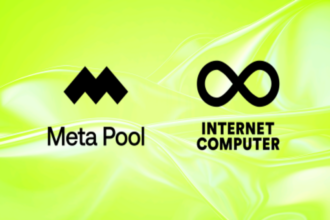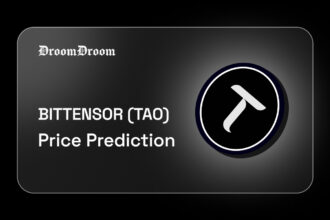Two phenomena in the web3 industry that are gaining more traction than all other digital concepts presently are Non-Fungible Token (NFT) and Metaverse.
Although both concepts are closely related, understanding the 7 key distinctions between them will arm any user with the clarity and insights they need to be on top of their game. To navigate the Web 3.0 revolution successfully with much ease and confidence than others, therefore, requires a sound knowledge of the distinctness of NFT from metaverse.
The key differences between NFT and metaverse lie in their fundamental definitions and purposes. While NFTs are unique digital assets that provides proof of ownership to holders, the Metaverse is a shared, virtual environment for real-time interaction with these assets and others like it.
“People don’t understand NFTs, Metaverse, and crypto today the same way they didn’t understand online shopping in 1995” – Anuj Jasani, CEO of Just Brandable
The popularity of NFTs and the adoption of metaverse into the mainstream media has grown exponentially since 2021 with the increased presence of crypto and conversations surrounding it. growing is the confusion between these two digital concepts or assets, particularly amongst crypto newbies.
Understanding NFTs
NFTs have been around for over a decade now. The first NFT, Quantum, was created on May 3, 2014 by digital artists Kevin McCoy and Anil Dash. This NFT was a short video clip of Jennifer, McCoy’s wife.
Grasping NFTs and Blockchain
To have an immediate grasp of the meaning of Non-Fungible Tokens (NFTs), an equal clarity on the meaning of Blockchain needs to be drawn.
NFTs are simply a unique type of digital assets, secured on a blockchain. They are unique in the sense that no two NFTs—like fingerprints— are the same. Unlike other cryptocurrencies like Bitcoin and other fungible tokens, which can be shared into smaller units and exchanged with other crypto coins, NFTs cannot be replicated or exchanged.
What then is Blockchain? Let’s imagine you and your friends want to play a game of poker but you want to make sure no one cheats. So, you decide to write down who wins or loses after each game in a notebook. Each page in the notebook is like a “block” of information.
Now, imagine you link each page on the notebook with a string to the previous page, forming a chain of pages. This way, if someone tries to cheat and change the information on one page, it would be obvious because it would mess up the order of the pages. This is similar to how a blockchain works.
In real life, instead of poker, a blockchain can keep track of things like money (in the case of NFT) or any other type of information that needs to be recorded and kept secure. And instead of storing this information in a notebook, it is stored on computers all around the world, in real-time. This way, it is very difficult for anyone to cheat (as in the poker game) or manipulate the information once it has been uploaded to the server. In a similar manner, blockchain is like a super secure notebook or store house, if you like, for the digital world.
As NFTs provide a way for users to prove ownership of a unique item or collectibles in the digital realm, it is finding more and more use cases in fields of real estate, art and music, even sports, like the NBAs.
Two common examples of NFTs that are rapidly becoming household names are Rarible—a digital art marketplace where artists can mint and auction their own NFTs—and SuperRare.
Why do People Buy NFTs?
NFTs as digital assets represent physical objects like music, art, collectibles, etc. Therefore, ownership of an NFT—say a physical piece of Rebrandt painting, for example—implies ownership of that painting, as well as the value or benefits associated with owning that piece of painting as an NFT.
Generally, people buy NFTs as a short or long-term investment, to resell them and make a profit or holding onto them as they increase in value over time, while others do so for aesthetics.
To sell NFTs, follow this detailed, simple step-by-step guide on how to sell NFTs
Exploring the Metaverse
The Metaverse, often confused as an NFT, is another buzz-worthy jargon that is becoming very popular in the crypto community. There is no simple definition of the term as it is considered an ever-changing phenomenon, with new researches and advancement in technologies going on from time to time. However, the term “Metaverse” is used to refer to a three-dimensional virtual environment where users immerse themselves in the buying and selling of digital assets online. It seamlessly combines virtual reality (VR) and augmented reality (AR) to create real-life user experience.
It’s like stepping into a video game, where you can explore new worlds, meet other players (who could be anywhere in the world), and even own assets. And these assets could be anything from virtual lands or landed properties to a new wardrobe for your avatar to digital collectibles, and the list goes on and on.
The aim of the metaverse is to act as the link between the physical, real world and the intangible, digital space in a immersive way.
Examples of Metaverses include Axie Infinity, Otherside,The Sandbox, and Decentraland (where you can own virtual lands or collectibles as NFTs).
The Intersection of NFTs and the Metaverse
Are NFTs and the Metaverse interconnected? Yes. NFTs and the Metaverse are closely intertwined. In what way or sense are they connected? In the Metaverse, assets such as virtual real estate, clothing for avatars (that is, your digital self), or even unique identifiers can be tokenized as NFTs. Meaning that users can prove ownership of these assets and trade them with others.
For instance, a user could buy a piece of virtual land as an NFT in a virtual world within the Metaverse, build a virtual house on this land and buy NFT-based furniture to furnish it.
It is safe to say, therefore, that there would be no Metaverse without NFTs. This also further establishes the fact that the connection between these two digital entities is in terms of how they are used in digital space.
7 Key Differences Between NFTs and the Metaverse
I have clearly shown how NFTs and the Metaverse are closely related. We will now explore the major key differences between them, namely:
Purpose: NFTs are serve as tokens for unique digital items to prove ownership, while the Metaverse is a shared virtual world where these items can exist, be bought or get sold.
Here is a relatable example of how these two differ in purpose: Famous Pablo Picasso, for instance, can mint NFTs for his artworks and sell them directly to his fans.
In the Metaverse, Picasso and his fans can socialize, play games, conduct business, and even own virtual land using tokenized NFT artworks. So, his NFTed-arwork (will serve as a currency) becomes the legal tender to transact in a new world (the Metaverse).
Interactivity: NFTs themselves are not interactive (though they can represent interactive items), while in the Metaverse, interaction is a core part.
In a simpler sense, it is like walking into a Walmart store to get groceries. The groceries are like your NFTs, while the store space in which the groceries are displayed for sale is the Metaverse. And while you can interact with the store by walking around to pick your preferred canned tomatoes and fresh chillies, from shelf to shelf, while also interacting with other customers (users), you cannot exactly do the same with your groceries (NFT). You can only pick them up or drop them.
Likewise, in the Metaverse, you can explore new worlds, meet other players (who could be anywhere in the world), transact and even own assets. But users cannot interact with Non-Fungible Tokens in that same exact manner.
Creation and Minting: NFTs are created or “minted” on blockchain technology, representing a unique digital item, as I have earlier pointed out. For instance, the digital artist Beeple— real name, Mike Winkelmann—made headlines in the art world when his artwork “Everydays: The First 5000 Days” was minted as an NFT and sold for a staggering $69.3 million at Christie’s auction house. On the other hand, the Metaverse is a virtual environment created using various technologies like VR, AR, and game engine software, and thus cannot be minted or sold off.
Value Proposition: NFTs are valued based on its inherent qualities and the value of the digital item it represents. This ‘inherent’ qualities has led to some NFTs being sold for astronomical prices. The CryptoPunk #7804, one of the 10,000 unique 24×24 pixel art images, was sold for 4200 ETH (approximately $7.56 million at the time of sale) in March 2021.
Conversely, the value of the Metaverse comes from the experiences and interactions it offers to its users. As Mark Zuckerberg said when Facebook rebranded to Meta, “You’re going to be able to do almost anything you can imagine.” This points to the vast potential of the Metaverse as a new game-changer for social interaction, entertainment, and business.
Accessibility: NFTs can be bought, sold, and owned by anyone with a crypto wallet and access to an NFT marketplace. Accessing the Metaverse might require additional hardware like VR headsets or powerful computers.
Gartner predicts that by 2028, 10% of public events (such as sports and performing arts) will offer participation in metaverse, fueling rapid buildout of commercial metaverse shared experiences.
Monetization: NFTs can be monetized by selling them on various marketplaces like OpenSea, Rarible, NBA Top Shot, etc. For instance, a digital artist can mint their artwork as an NFT and sell it directly to collectors, retaining more profits by cutting out middlemen.
In the Metaverse, monetization can come from various sources like virtual real estate, in-game items, or even advertising.
For example, virtual land parcels in the Metaverse are actually NFTs. Companies can also monetize through advertising and selling virtual goods or services.
Interoperability: This is the ability of computer systems or software to exchange and make use of information. While some NFTs can be used across different platforms (like an avatar usable in different virtual worlds), they are generally tied to the platform they were minted on, meaning they were created on a specific blockchain platform and are usually restricted to that platform.
In the Metaverse, assets and identities can move seamlessly between different virtual worlds.
The Future of NFTs and the Metaverse
As we look towards the future, both NFTs and the Metaverse present exciting opportunities. The ability to prove ownership of digital items could significantly transform industries like art, music, gaming, and real estate. On the other hand, the Metaverse is changing how we socialize, work, and conduct business.
Based on a report by TechReport, as of 2022, there were around 400 million active Metaverse users. And its user base will likely exceed 1.4 billion by 2030. On the other hand, NFT sales during Sotheby’s Metaverse’s inaugural sale generated nearly 18.7 million U.S. dollars, globally.
This shows the rapid growth of both NFTs and the Metaverse in recent years.
However, both NFTs and the Metaverse have their peculiar challenges that need to be addressed. For NFTs, questions around intellectual property rights and environmental impact need to be resolved. For the Metaverse, issues around data privacy and governance are critical.
Conclusion
Effectively navigating the web 3.0 space and fully benefiting from exploring its many features and the possibilities it portends, depends reasonably on a novices’ ability to distinguish between two prominent concepts in the cryptosphere— NFT and the Metaverse. It is a good place to begin a crypto journey. While the two concepts are interconnected, in terms of their usage, they both differ in purpose, interactivity, how they are created/minted, in monetization and in a few other major ways.



















